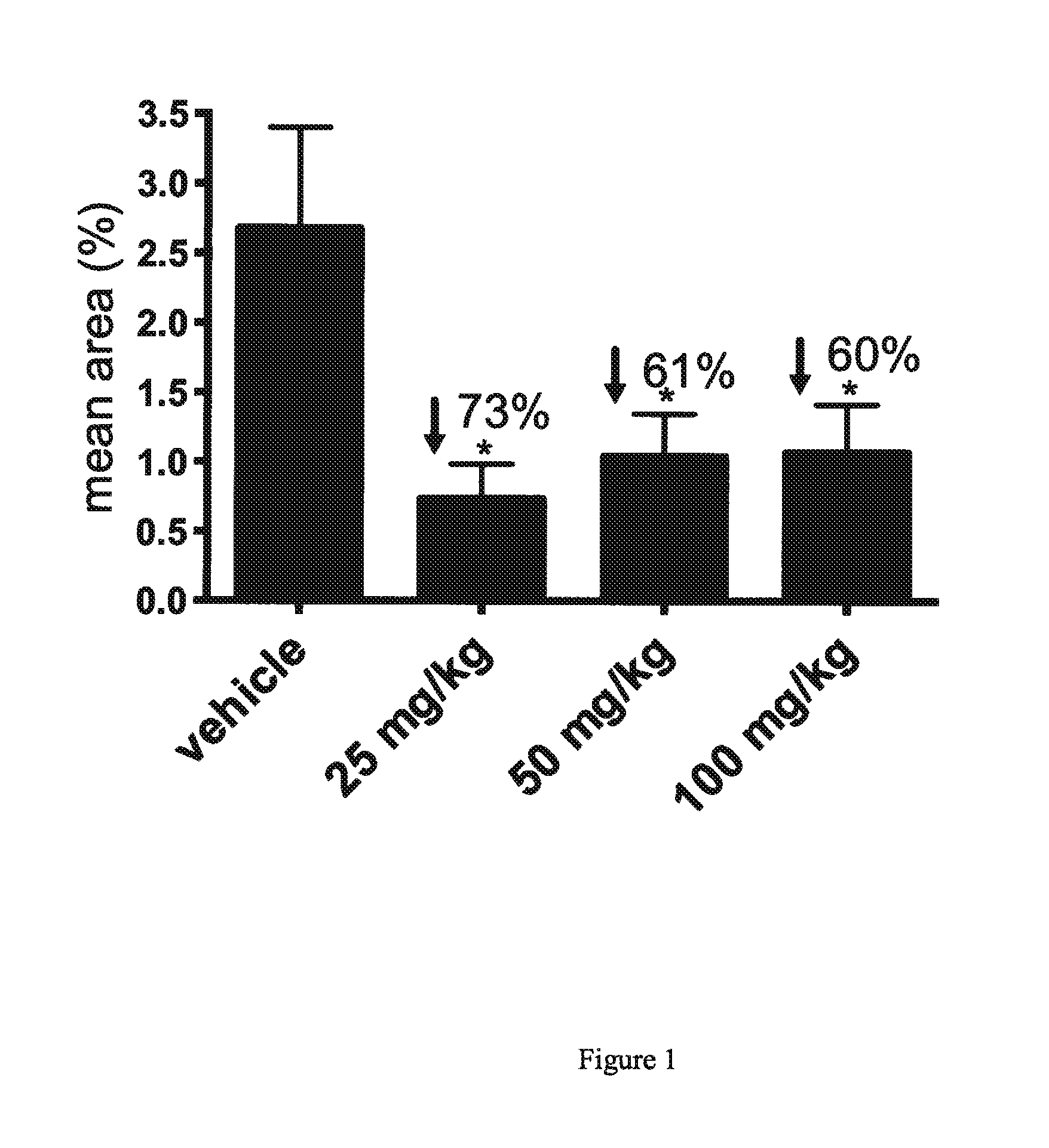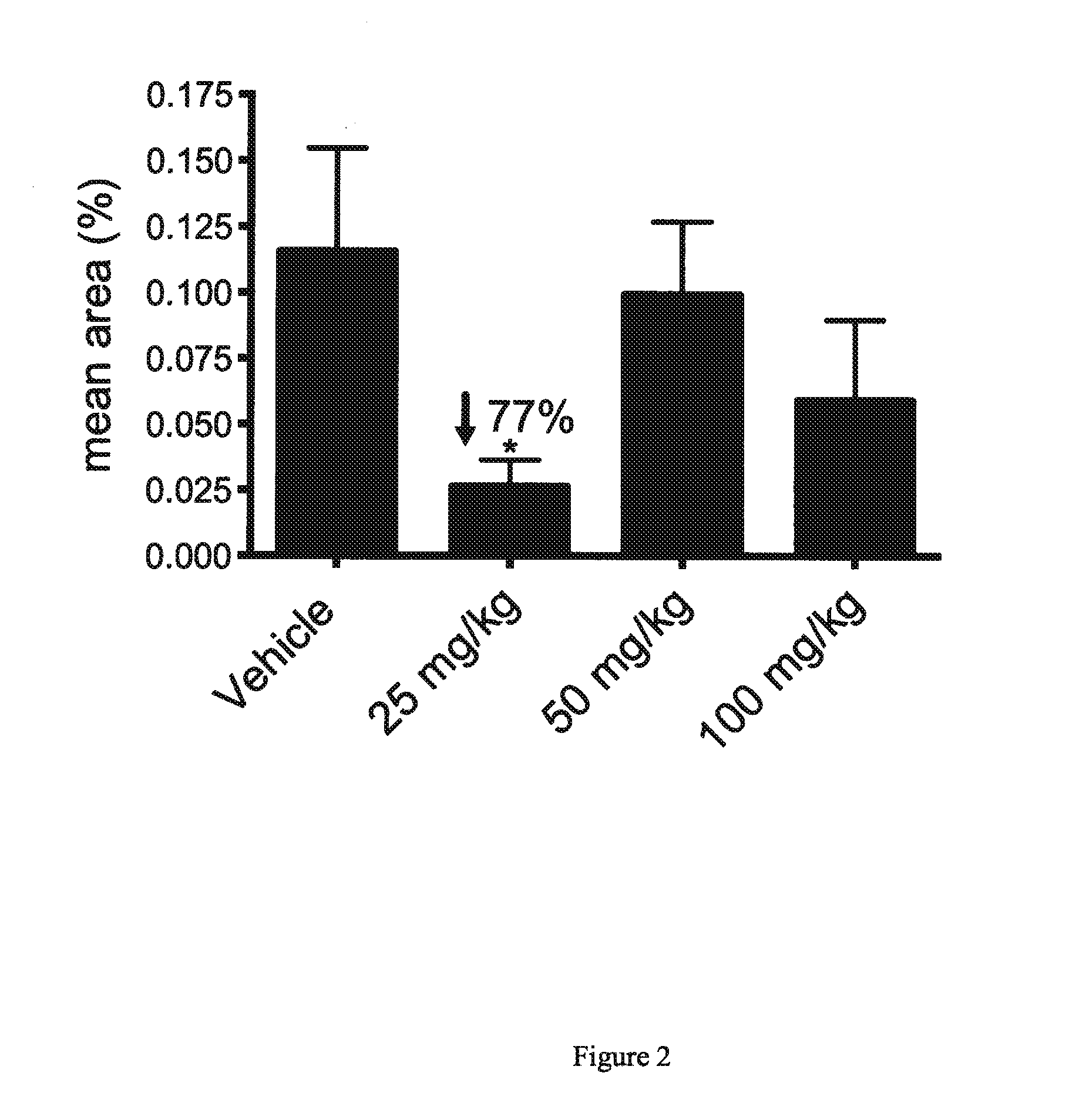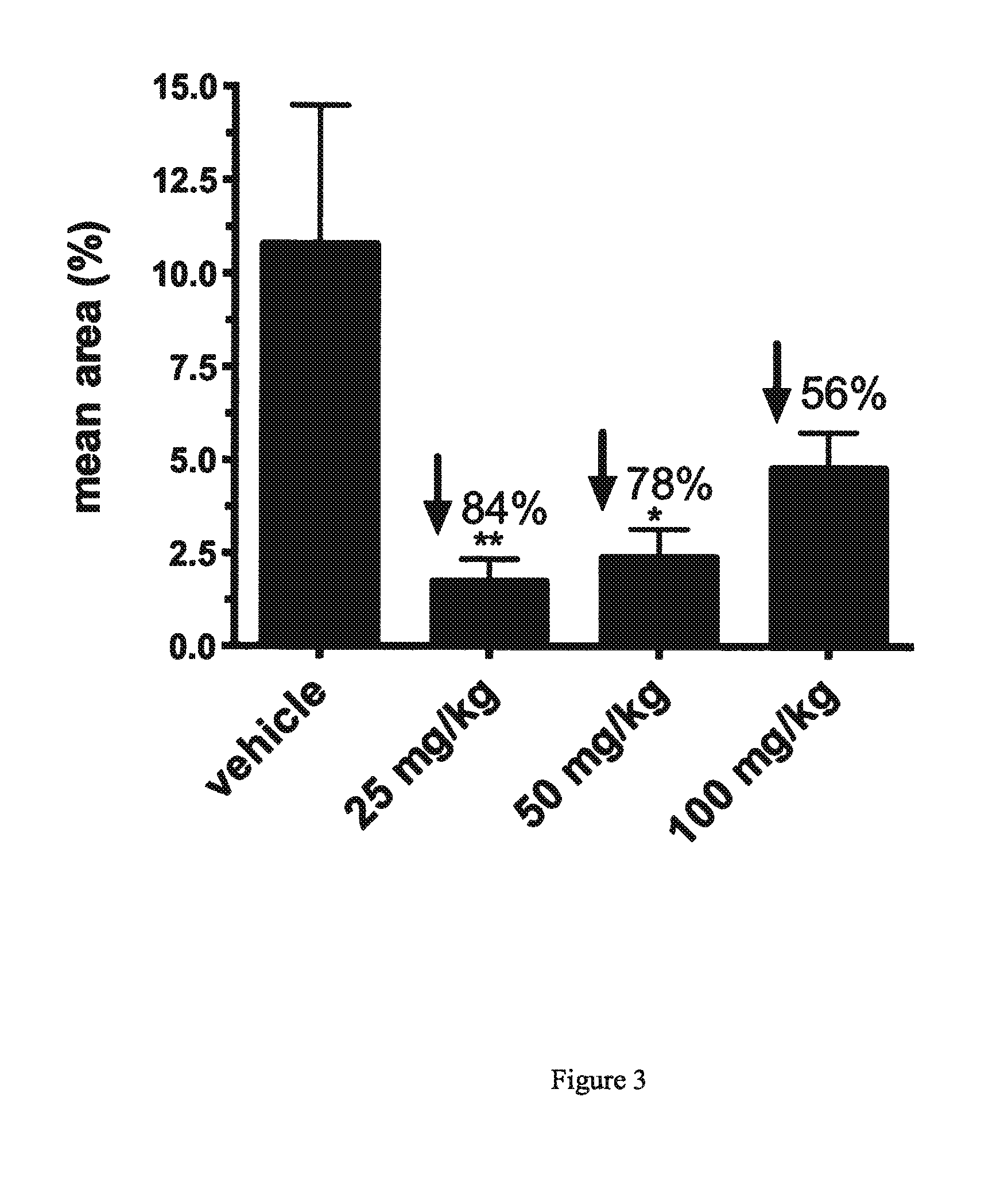Compositions and methods for the treatment of systemic aa amyloid diseases
a technology of amyloid disease and amyloid deposition, applied in the field of dihydroxyaryl compounds, can solve the problems of toxic and neuronal cell death, no cure or effective treatment, and amyloid deposition can be detrimental to the patien
- Summary
- Abstract
- Description
- Claims
- Application Information
AI Technical Summary
Benefits of technology
Problems solved by technology
Method used
Image
Examples
example 1
3,4-dihydroxybenzoic acid 3,4-dihydroxyanilide (Compound 51; DC-0051)
Method 1—via Methylenedioxy-Protected Compounds
[0046]
3,4-methylenedioxybenzoic acid 3,4-methylenedioxyanilide (Compound 51)
[0047]To a solution of piperonylic acid (500 mg, 3 mmol) in dry CH2Cl2 (25 mL) under nitrogen, was added oxalyl chloride (573 mg, 4.5 mmol) with three drops of dry DMF, and the mixture was stirred for 1 hour. Solvents were removed in vacuo giving the acid chloride as a white solid. To a solution of the acid chloride in dry CH2Cl2 (50 mL) under nitrogen, cooled to 0° C., was added dropwise, a solution made up of 3,4-(methylenedioxy)aniline (498 mg, 30.1 mmol) and pyridine (0.5 mL) in CH2Cl2 (5 mL). The reaction mixture was stirred for 30 minutes at room temperature, then diluted by the addition of CH2Cl2 (100 mL), washed with aqueous HCl (50 mL, 10%) and sodium bicarbonate solution (50 mL) then dried. Solvents were removed in vacuo to give the crude product as a brown crystalline material. Recry...
example 2
Preparation of Amyloid Enhancing Factor (AEF)
[0054]On Day 1 the spleens of mice previously induced with AEF were selected for the prescence of amyloid and weighed (Gervais, F et al., J. Leuk. Bio. (1988) 43:311-316 and Hol, P. R. et al., Br. J. Exp. Path (1985)66:689-97). The spleens were then transfered to a Kontes grinder and homogenized in 31 mL of 0.9% NaCl (Saline) until slurry. The slurry was entrifuged at 10,000 RPM for 30 minutes and the supernatant was discarded. The pellet was re-homogenize in 31 mL Saline which was repeated 5 times. The pellet was stored at 4° C. overnight. On day 2 the pellet was resuspended in 23 mL ddH2O to remove salt and centrifuged at 15,000 RPM for 2 hours. The pellet was resuspended in 15 mL ddH2O and again centrifuged at 15,000 RPM for 2 hours. The supernatant was saved and labelled Sup II. This step was repeated two more times labeling subsequent supernatents as Sup III, and Sup IV respectively. On Day 3 500 uL of each saved supernatant for use ...
example 3
Induction of Mice with AEF to Create Experimental AA Amyloid Mouse Model
[0055]The AEF preparation was delivered on day (minus) −14 of dosing by lateral tail vein injection of 80 μg / 100 μL in sterile water. Concominent with AEF, a 0.5 mL subcutaneous injection of 3% silver nitrate solution was delivered to each mouse between the scapulae. Mice were observed each day for adverse reaction to this procedure.
PUM
| Property | Measurement | Unit |
|---|---|---|
| body weight | aaaaa | aaaaa |
| body weight | aaaaa | aaaaa |
| body weight | aaaaa | aaaaa |
Abstract
Description
Claims
Application Information
 Login to View More
Login to View More - R&D
- Intellectual Property
- Life Sciences
- Materials
- Tech Scout
- Unparalleled Data Quality
- Higher Quality Content
- 60% Fewer Hallucinations
Browse by: Latest US Patents, China's latest patents, Technical Efficacy Thesaurus, Application Domain, Technology Topic, Popular Technical Reports.
© 2025 PatSnap. All rights reserved.Legal|Privacy policy|Modern Slavery Act Transparency Statement|Sitemap|About US| Contact US: help@patsnap.com



